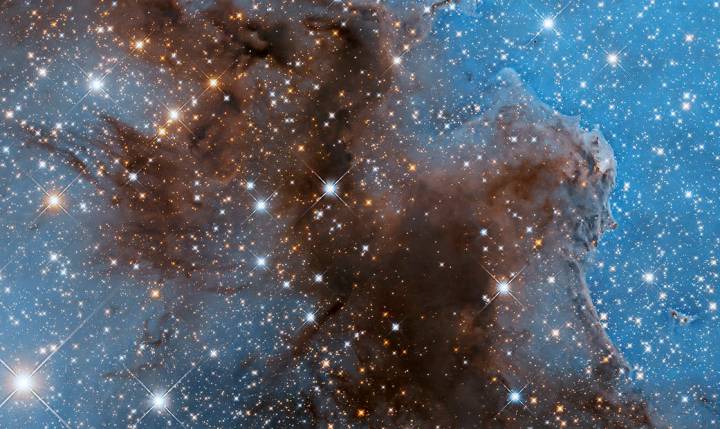[ad_1]
The Hubble House Telescope not too long ago captured a scene made well-known by its sibling, the James Webb House Telescope. One of many first photographs launched from Webb confirmed the Carina Nebula, a very placing construction of mud and gasoline situated in an space of the Milky Means known as the Carina-Sagittarius arm. Lately, Hubble has imaged Carina as effectively, snapping a picture of a small part of this well-known nebula.
In comparison with Webb’s picture of Carina, which was taken within the infrared wavelength, Hubble’s picture is extra pastel. Though Hubble operates primarily within the seen gentle wavelength and Webb operates within the infrared, on this case, Hubble used its infrared capabilities to look via the mud of the nebula and see its construction.

“It’s an emission nebula, which means that the extreme radiation from its stars ionizes the gasoline and causes it to glow,” Hubble scientists clarify. “That gasoline is broadly and thinly unfold out over a big space, incomes it the added designation of a diffuse nebula. Carina is a dynamic space of the sky with bursts of star formation occurring alongside star demise. As stars type and produce ultraviolet radiation, their stellar winds disperse the gasoline and mud round them, generally forming darkish, dusty cloaks and generally creating empty patches for the celebrities to turn into clearly seen.”
Hubble has visited Carina earlier than, like this picture taken in 2007 or one other taken in 2010. Every picture focuses on a unique space of the nebula, bringing collectively completely different wavelengths from seen gentle to infrared and ultraviolet, in an effort to convey out completely different options of the scene like mud, gasoline, and stars.
At 300 light-years throughout, the nebula is huge, with many alternative areas displaying off scientifically attention-grabbing areas like these that are busy with star formation.
Editors’ Suggestions
[ad_2]
Source link


